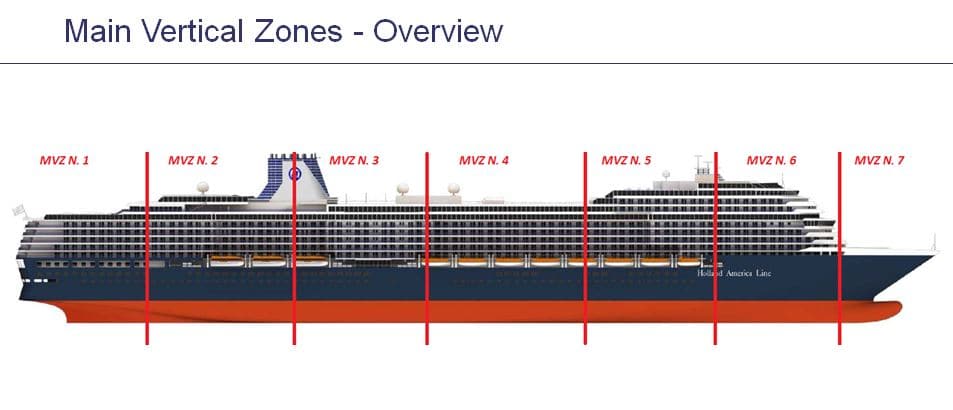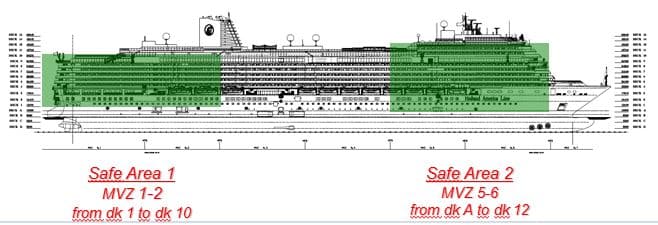Also for today the weather gurus had indicated that there might be rain during but as in previous ports not much happened in that direction. Local influences such as wind and mountain ranges kept the rain away and we all benefited from it. Sightseeing in the rain is less enjoyable than when it is dry. I personally prefer it to be overcast when I walk through a city as otherwise the sun will always be in your eyes when you want to look at something. The whole list of ships which I gave yesterday did indeed show up and they were nicely divided by size. The small ones were docked at the World Trade Center, where you can walk into town and the big boys were at the outer breakwater. From here it is a long walk to town and not a very safe one as the drivers in this area do not expect pedestrians to be around. The Port Authority has recognized that challenge and they run a shuttle bus service to the south side of the Rambles, the area around which Barcelona downtown is concentrated. For 4 Euro’s up and down and that is a price that does not make the local taxi driver very happy, so there were not many to be seen.
I am spending my days hidden away in my cabin as I am working on a special project for the ship: the figuring out of enhanced procedures. And it is something very particular to the modern ships that are now being built.
Solas was introduced in 1914, due to the sinking of the Titanic in 1912. As accidents and incidents kept happening in the Shipping Industry, those 1914 Solas regulations kept evolving to make the ships safer and safer. So the latest 2016 version is not comparable to the 1912 issue at all. For the legislative authorities it is most of the time a catching up act as it takes a while to get the majority of the Seafaring Countries of the world on one line and then to have the new regulations incorporated in the local, Flag State, Laws.
What I am working on is called: Safe Return to Port. In 2010 a new Solas Rule came about stipulating that ships longer than 90 meters should be so designed that if one section of the ship became incapacitated, the ship would still be able to get to the nearest port, with other words: Safe Return To Port or SRTP. All the new and larger ships have this facility and as such also the Koningsdam. The shipyard made arrangements in the construction that if one main vertical zone would be completely gone, then the ship can still get to the nearest port (with a maximum of 1500 Nautical Miles) and while doing so there will be shelter for Guests and Crew displaced from this section of the ship. So if the stern would burn out then everybody would move forward and there would be at least one engine available to move the ship. If the bow would burn out, then everybody would move aft and there would be at least one engine available to move the ship.

Each Cruise ship is divided in to Main Vertical zone or MVZ’s. The longer the ship the more Vertical Zones. The Koningsdam has 7 but ships which are longer might easily have 8 or 9.
That is what we have place and the ship has been training, with table top exercises, to get familiar with the concept. On request of the ship I am now on board to see if I can speed up the procedures, to reduce the time between the occurrence and everybody being “happily” settled in another part of the ship. So I am creating a “Manual” from the perspective of the Captain. Set up in such a way that his decisions trickle through quickly and efficiently. One “manual” with a logical flow to follow. This instead of the 5 or 6 manuals that are legally required because of the STRP but are approaching it from 5 or 6 different angles. To give a simple example: When I read my car manual, my tire specs are on page 25 but my car tire pressure is mentioned on page 73. When I sit in my car and think about my tires I do want all my car tire information on one page. It does not make sense that it works that way but it happens when several independent groups work on the same challenge but from a different perspective.

Imagine the center of the ship being affected, then we can move the guests to bow or to the stern. If the emergency would be somewhere else, we would change the re-allocation accordingly.
My hope is that by the end of the cruise, the Captain (after having read all the required manuals) can put them aside and then grab my booklet and go to page 7 which says Captain and then finds All the information he needs to know. All the actions he has to take, all the things he has to keep an eye on and has all the frameworks for announcements he has to make to let it all happen. That page 7 will then link in with checklists for the Heads of Department who can quickly get all their teams going and that should speed up the evolution. And we do it in the “Holland America Way” within the Emergency Routines the guests are used to and so that they do not lose their toilet or meal hours. (Although Lobster Thermidor might not be on the schedule)
The good ship Koningsdam will sail at 18.00 hrs. and head for our next port: Marseille in France. The weather calls for a Windy and Rainy day (in the afternoon) and for temperatures of around 70oF / 21oC. The wind is forecast to be from the South East so at least there will be no Mistral as that is a land wind coming from inside France from the North West. That wind can be as weak as 25 knots but also easily 60 knots. And then it is bye bye Marseille as the wind is then almost perpendicular on the harbor entrance and then they close the port.

Leave a Reply